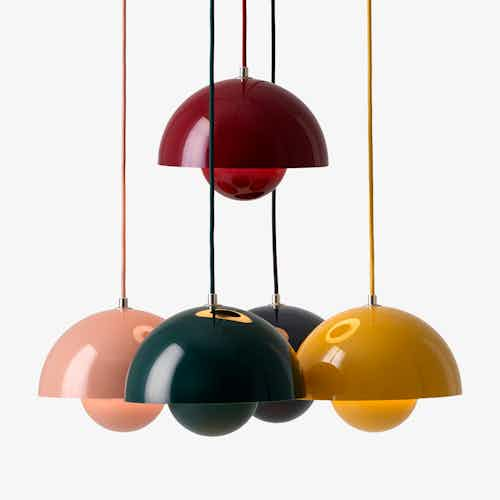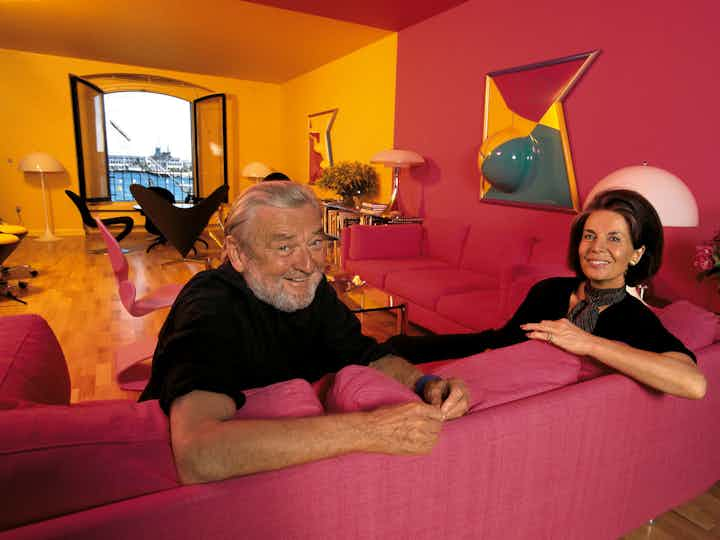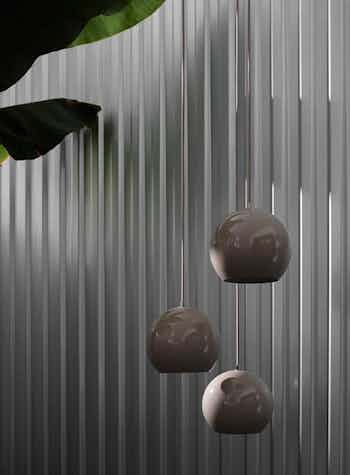Your search returned no results for products. Try modifying your search.
Perhaps no other designer within the last half-century has had to overcome such a high level of resistance by a modern design establishment than Verner Panton. The post-war aesthetic of simplicity and functionality, as well as the craft-based traditions of Scandinavian lighting and furniture-making dominated the world of Danish design, and was further reinforced at the Royal Danish Academy of Art where Panton earned a degree in architecture in 1951. Although influenced by members of the Danish Culture Cannon, and friendships with contemporaries Hans Wegener, Poul Henningsen, and Arne Jacobsen, Verner Panton unabashedly sculpted a new identity in the world of Danish design, and brazenly changed the course of contemporary furniture and lighting design and manufacturing in the process.
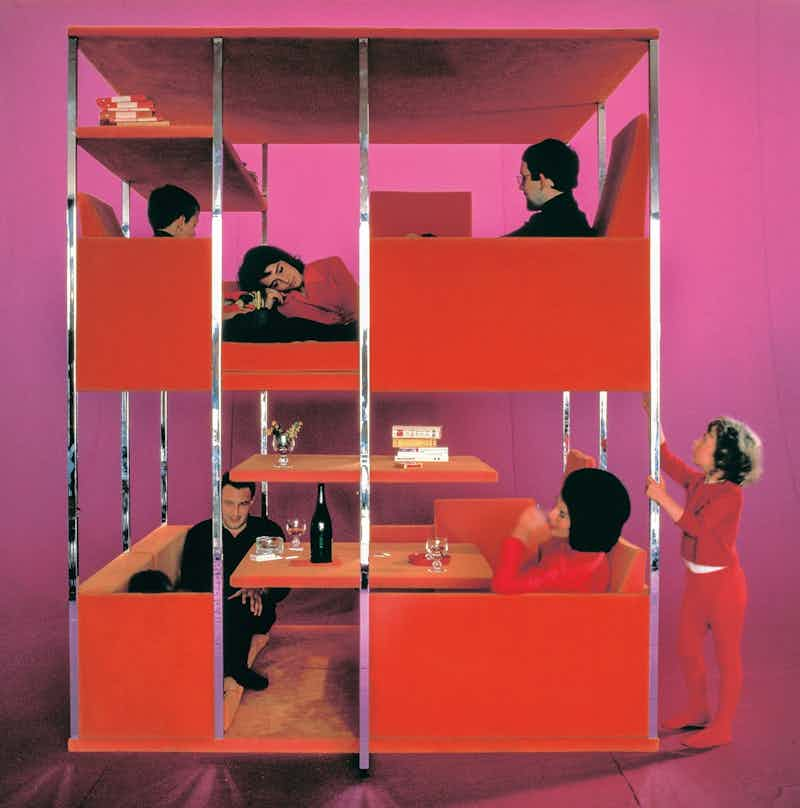
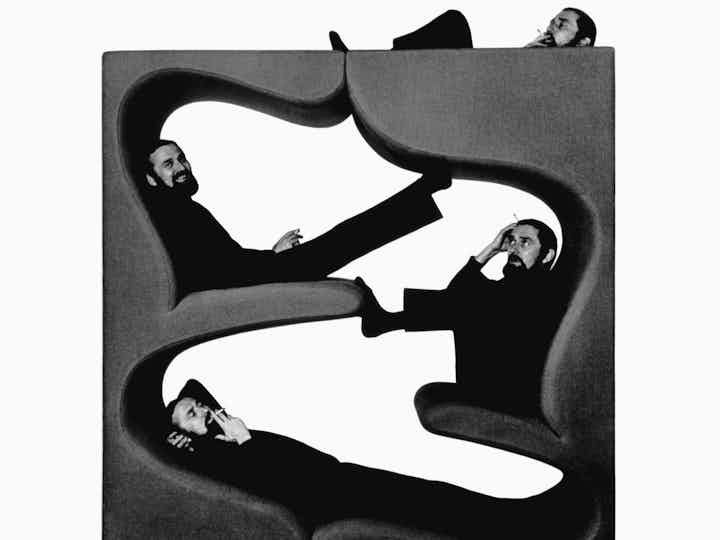
© Verner Panton Design AG
VERNOR PANTON: THE BEGINNING
Early in his career, through his friend and designer Piet Hein – who first encouraged him to start designing lighting – Panton was introduced to famed architect, Arne Jacobsen. In 1950 he began working in Jacobsen’s studio on the Antm Model 3100 – the now omnipresent Ant Chair. The Ant Chair was the first of the Series 7 chairs, and the first mass-produced chair to have the seat and back formed from a single piece of laminated veneer (credited to Jacobsen, it is widely believed that Panton was behind the design and development of this iconic chair).
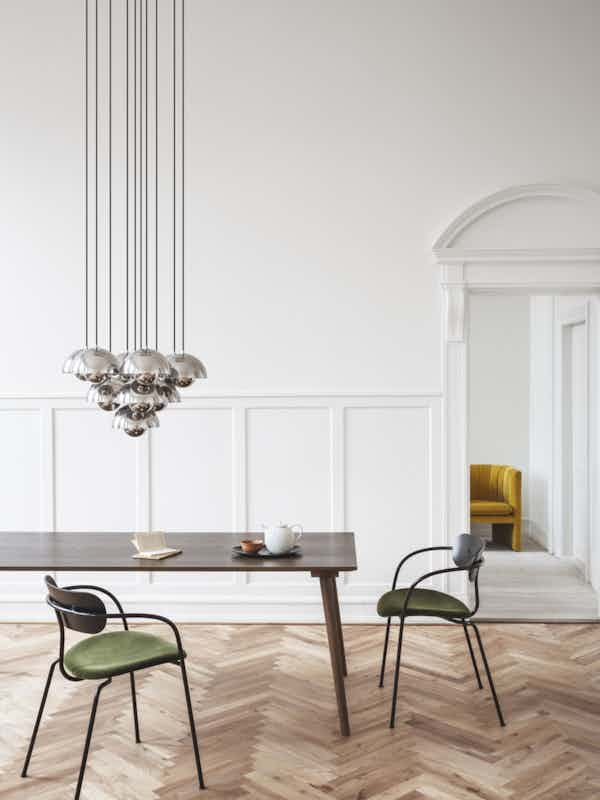
Though Panton respected Jacobsen immensely, he soon felt restricted by Jacobsen’s “too clean” design aesthetic and traditional approach to craft. He left the firm in 1953, bought and converted a VW bus into a mobile office, and traveled Europe in search of new materials and industrial production technologies while establishing contacts with colleagues, fabricators and dealers alike. He knew that the future of design would not be based in tradition, but rather in innovation, and that unconventional forms could be made using new materials such as foam, tubular steel and plastic. This life-altering experience set the course for Panton’s future work with furniture and lighting manufactures including &Tradition, Vitra, Schönbuch, and Fritz Hansen.
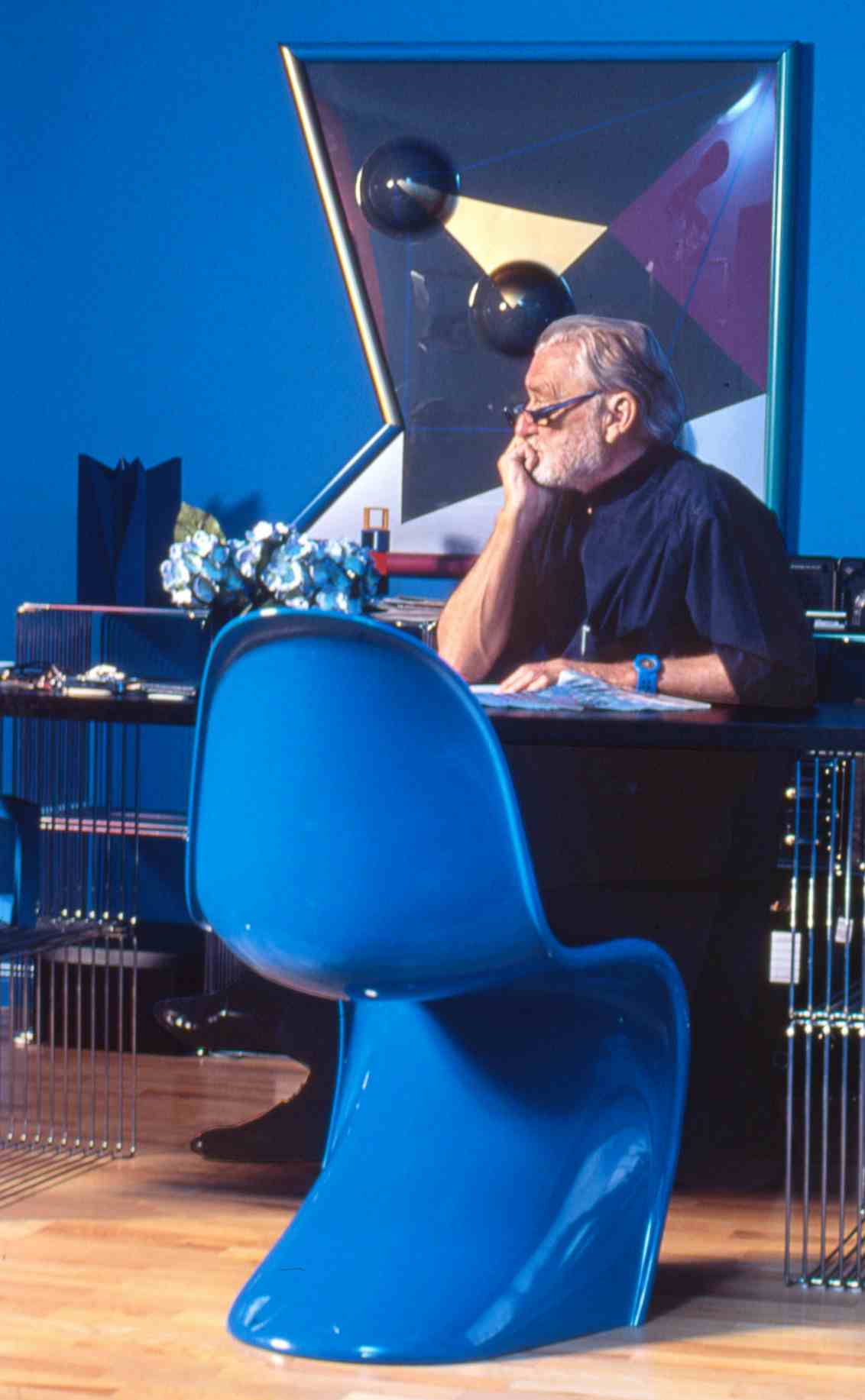
Verner Panton, 1994 | Photo courtesy of Architectural Digest
LIGHTING DESIGN
Engrained in our collective design consciousness is Panton’s iconic furniture, most notably, the technologically groundbreaking Panton Chair. However, as much as the Danish designer sought a new language in seating form, he understood that the interior environment was equally shaped by the collaboration of color and light. Panton’s lighting was designed to interact with its surroundings, creating a variation of atmospheres depending on the situation. It was the emotional elements of these interiors that Panton aimed to manipulate through lighting.
In 1968, the Danish company Frandsen began working with Panton and shortly thereafter started manufacturing a number of his lighting designs, including the celestial and hallowed VP Globe and Panto pendant light. That same year we also saw the VP Flowerpot series, now manufactured by &Tradition. The now-iconic postwar light uses lacquered aluminum in a playful yet minimal shape, referencing the flower power movement happening at the time.
Verner’s intention was to create an interesting new lamp which had never been seen before,” recalls the artist’s wife Marianne, who had a significant influence on her husband’s creative process over the years. “The bright, shiny enamel, and the coloured cable had never been seen in lighting fixtures before.”
Of the hundreds of Panton’s designs, nearly all have organic and geometric symbiosis.
ORGANIC DESIGN
As much as Panton was a student of geometry and architectural proportions, often applying mathematical solutions to solve spatial relationship problems in his designs, Panton would use the organic world around him for inspiration. One of his earlier organic lighting designs was the Topan Pendant (1959) - a precursor to the Pop Art Movement. A sculptural gem that not only provides illumination, it also acts as a decorative element either alone or in clusters, and adds a cozy intimacy to any interior. Originally designed for the Astoria Hotel and Restaurant in Trondheim, Norway, the Topan became an integral design element in Panton’s approach to visually immersive environments, saturated with vivid colours, patterns and provocative furnishings. It was also the predecessor to the Flowerpot lamps that followed, which together with Topan are design siblings in &Tradition’s lighting collection.
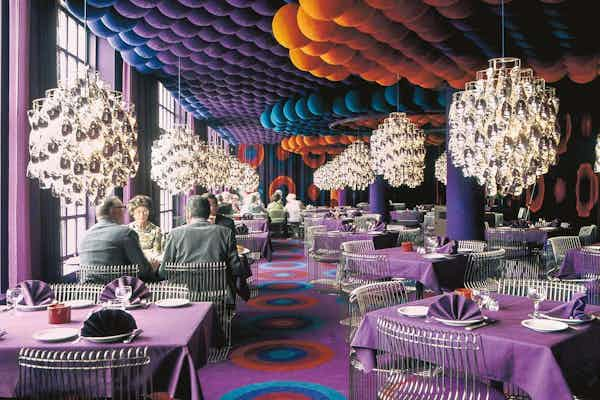
The Varna Restaurant in Århus, Denmark, 1971
GEOMETRIC DESIGN
The sphere, seen with both the Flowerpot and Topan lights, was used as the basis for a number of his geometric lighting creations, often adding to or subtracting from this basic shape. These, like many of Panton’s lamps, though functional, were created to be appreciated more as sculpture and atmospheric instruments, rather than lamps in the classical sense. In other words, they’ll light up the room – even when they are turned off.
Though Panton’s contribution to contemporary lighting during the 1960’s and 70’s were significant, he also designed a multitude of furniture and objects with a geometric basis. Take for instance the Pantanova series, originally designed in 1971 for the Århus restaurant, Varna. However, Pantanova was made internationally known in 1977 having been featured in the 1977 James Bond blockbuster film, The Spy Who Loved Me
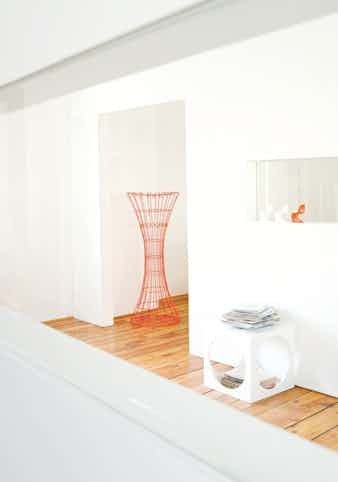
Another geometric-inspired design from 1971 was the Panton Coat Stand, now manufactured by Schönbuch. Its elegant, curved, hourglass shape is formed from powder-coated metal, which is available in a range of colors. When not in use, the Panton Coat Stand has the presence of a contemporary sculpture. This eye-catching piece has been specified for entrance areas in both commercial and residential settings, proving once more that Panton’s designs seamlessly bridge function and aesthetics.
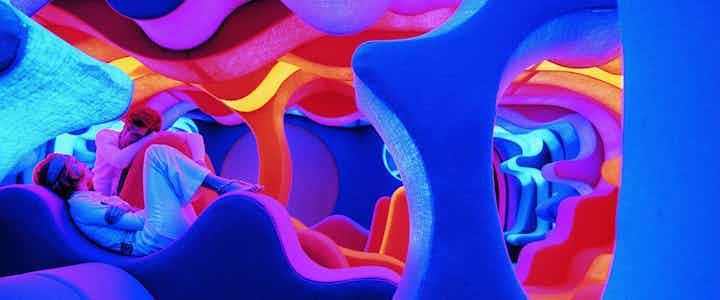
“Fantasy Landscape” of the Visions 2 Exhibition, 1970
PANTON’S LEGACY
Verner Panton designed lighting and furniture that was both relaxed and inspired, and most importantly, he designed pieces that integrated with the environment in which it was situated. His designs were radical for the time; tailor-made for some future era; but as styles and trends come and go, his work remains relevant. Panton’s preoccupation with technical and aesthetic solutions typified the unique qualities of his designs, and also his kaleidoscopic vision. Lacking peripheral vision, however, was perhaps one of Verner Panton’s greatest attributes, and, undoubtedly, helped him achieve the level of success and influence he had – not only on furniture design, lighting design, textile design, and interior design, but also on the philosophy of design itself.
Though he left us in 1998, his body of work is still a powerful influence on aspiring designers, and his lighting is still aglow and his furniture still enriches some of the most fashionable homes, hotels, restaurants, and businesses today.
To find out how our pieces can enhance your design project, please contact us at 312.329.9000 for Chicago or 212.262.9000 for New York or email sales@haute-living.com. Haute Living's design professionals are ready to assist your needs in every aspect of the design process - from conception and technical specification to final delivery and installation.

